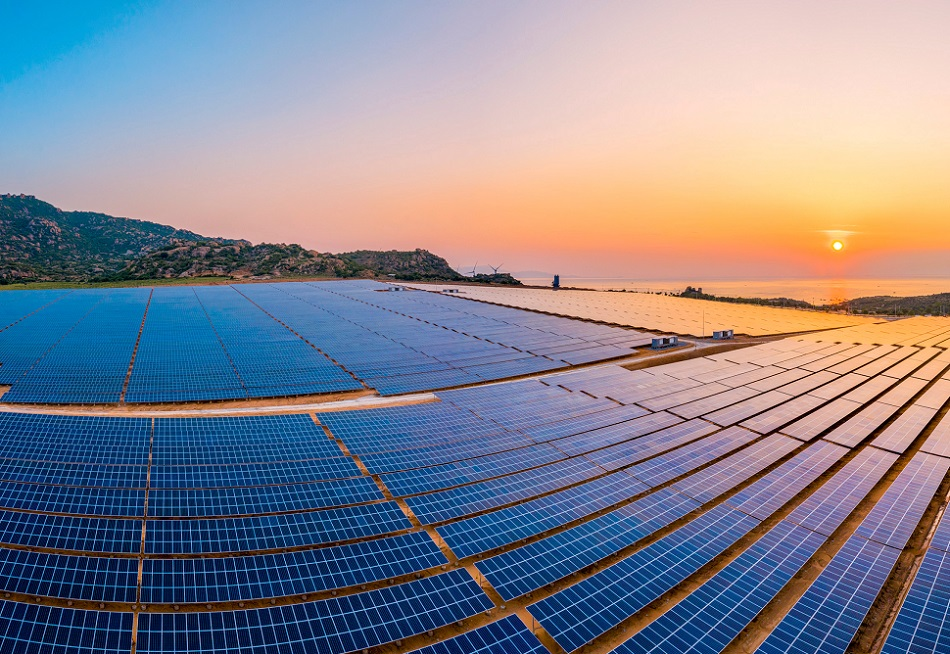
Image Credit: Nguyen Quang Ngoc Tonkin/Shutterstock.com
Since the Industrial Revolution in the nineteenth century, human society has been able to progress rapidly through technology. Transport, urban development, medicine, information technology, manufacturing, and commerce have all been made possible due to advances in our ability to manipulate the world around us in ever more complex and useful ways.
However, this technological progress has come at a significant cost. The Industrial Revolution and its subsequent impact on human society have been – quite literally – driven by the large-scale burning of fossil fuels such as coal and oil to generate energy. This has released massive amounts of carbon dioxide (CO2) into the atmosphere, which in turn is causing rapid climate change, destruction of the planet’s ecosystems, acidification of the oceans, and a myriad list of environmental problems.
Solar Energy
One of the keys to minimizing our impact on the planet, while maintaining the quality of life advantages that have been brought about by industrialization, is the pursuit of clean sources of energy. Among the best developed and most promising of these sources is solar power, captured and converted to energy through the application of photovoltaic (PV) projects.
Since the first solar panels were developed in the 1970s, PV technology has been advanced rapidly in terms of energy conversion efficiency and cost. With new materials and methods arriving on the market almost monthly, the direction of travel in this regard is extremely positive.
The Whole System
However, simply improving efficiency and reducing manufacturing cost (including the environmental cost of PV manufacture which must take into account rare mineral extraction, energy costs, transportation, installation, and so on) is not enough on its own to ensure we can stop relying on the burning of fossil fuels to meet our energy demands.
Recent developments in PV management techniques instead focus on so-called balance-of-system (BOS) costs. These are all of the other costs related to the installation and operation of a PV project. They include the electronic infrastructure in the PV project such as the wiring, switches, inverters, and batteries; optimization devices such as GPS trackers, weather monitoring systems, and solar irradiance sensors; the electric grid which distributes electricity to end-users, and connections to it; and physical infrastructure and requirements such as offices, service roads, concrete platforms, and land.
In addition to these fixed costs in PV project installation, utility-scale PV projects must account for labor costs, overheads such as marketing, accounts and legal services, insurance, and finally profit for shareholders and investors.
Room for Improvement
This more complex picture of a PV project provides a much richer understanding of the overall cost of solar energy. Simply the conversion efficiency of PV materials is not enough to take into account when managing a utility-scale PV project.
However, because of this complexity, there are still significant gains to be made to produce electricity from solar energy more and more efficiently. Efficiency savings can be made in project management with computerized and automated distribution and control systems.
Various technological advances in peripheral aspects of the PV project can also allow efficiencies, such as improved battery performance, the conductivity of materials used to distribute electricity, the ideal situation of PV projects, reduced labor costs (mainly from increased automation and technologies such as self-cleaning glass, and so on.
Hope for an Energy-rich, Environmentally Stable Future
The wider adoption of PV technology can assist in driving these required efficiencies forward. As more and more energy is generated in utility-scale PV projects, the motivation for seeking efficiency gains is increased. Considering the size of BOS costs relative to the entire PV project, and the complex nature of these costs, there is significant room for improvement which will ultimately make solar energy conversion more economically and environmentally efficient.
Possibilities for reducing BOS costs and ultimately producing electricity from solar power cheaper than from fossil fuels include massive automation of the entire energy system from conversion and generation through transmission to distribution, potentially powered by quantum or other advanced methods of computing; the increased use of sites with high levels of solar radiation, enabled by international cooperation; and the increased energy-efficiency and responsiveness of the grid-enabled by the advancing Internet of Things (IoT).
Disclaimer: The views expressed here are those of the author expressed in their private capacity and do not necessarily represent the views of AZoM.com Limited T/A AZoNetwork the owner and operator of this website. This disclaimer forms part of the Terms and conditions of use of this website.